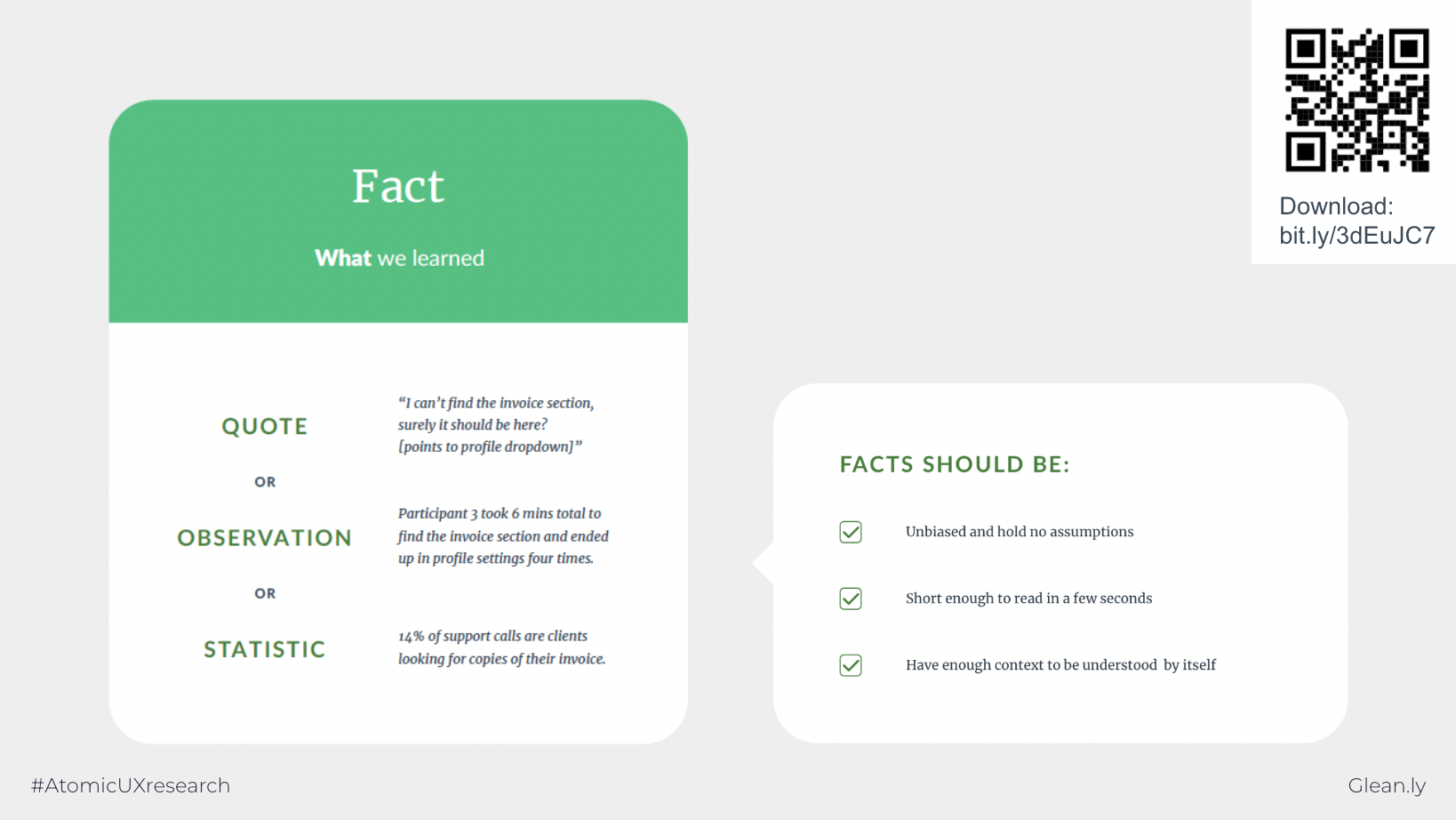What makes a good fact?
Facts are what we learned from an experiment.
A good fact is a quote, observation or statistic, but it is never our opinion.
Here are some examples:
- “I can't find the invoice section…”;
- “Participant took 6 minutes to find the invoice section”;
- “14% of support calls are clients looking for invoices”.
They should be unbiased and hold no assumptions, short enough to be understood in a few seconds.
If your fact is longer than 255 characters, consider summarising it or splitting it up in to several facts.

Fact Taxonomy:
Fact filters should provide context for the facts. Specially who or where it came from, and what it is related to:
- Source
- Demographic or persona
- Sentiment
- Journey
The experiment tells us how it was learned (through a moderated user test, for example).
The facts need to tell us who told us, give us clues about their demographics or sentiments, where they were at the time.
For quantitative data - it must show things like the date range and factors that allow us to reproduce the data.
Some of this might be in the fact itself so doesn’t need separate taxonomy. But it does no harm to have a structure in place.
One common mistake we see is facts listed as insights. For example if we did a survey and found '68% of customers prefer green clothing'. This finding came from what the survey respondents told us, it is not our opinion, therefore this is a fact. Our insight might focus instead on why so many prefer this colour or what it means to our organisation.
Next: Understand what makes a good insight >>
